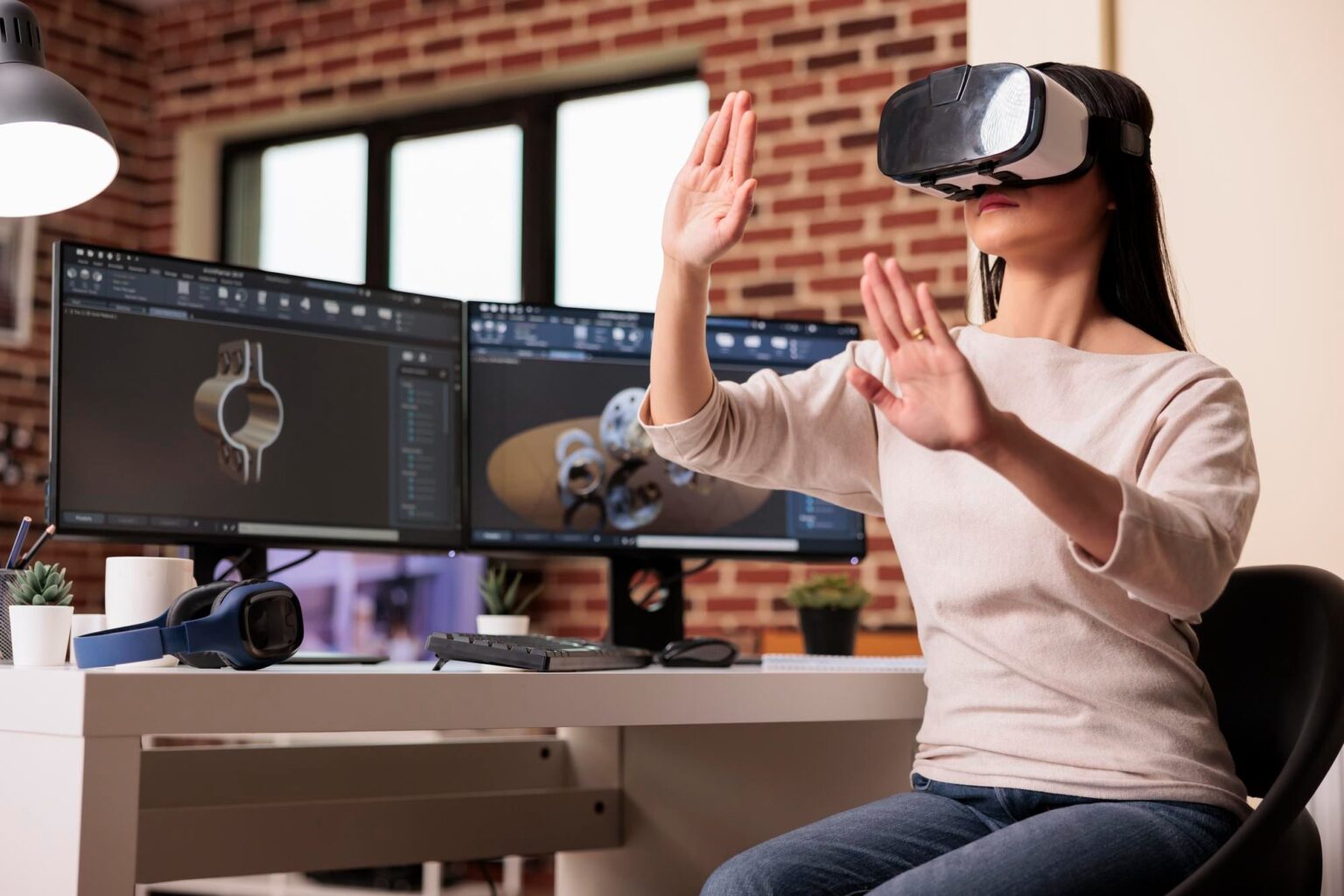Augmented Reality (AR) is transforming manufacturing and industrial processes by improving efficiency, safety, and productivity. By overlaying digital information onto the physical world, AR enhances the capabilities of workers, streamlines operations, and enables real-time decision-making. Here’s how AR is revolutionizing manufacturing and industrial processes:
- Assembly and Maintenance Guidance: AR provides real-time assembly and maintenance guidance to workers. By wearing AR-enabled devices, workers can access digital overlays that guide them through complex assembly processes or maintenance tasks. This reduces errors, speeds up operations, and ensures adherence to quality standards.
- Remote Assistance: AR enables remote assistance and collaboration in manufacturing processes. Technicians or experts can use AR devices to provide real-time guidance and support to on-site workers. Through live video feeds and AR annotations, remote experts can troubleshoot issues, provide instructions, and assist with complex tasks, reducing downtime and travel costs.
- Training and Skills Development: AR enhances training programs by creating interactive and immersive experiences. Trainees can practice assembly or maintenance tasks in AR simulations, allowing for hands-on learning in a safe and controlled environment. AR-based training accelerates skills development, reduces training costs, and improves knowledge retention.
- Quality Control and Inspection: AR simplifies quality control and inspection processes by overlaying digital information onto physical objects. Workers can use AR devices to identify defects, compare digital models to real-world objects, and receive real-time feedback on quality parameters. AR-based inspection improves accuracy, reduces inspection time, and enhances product quality.
- Inventory Management: AR facilitates efficient inventory management in manufacturing facilities. By using AR devices, workers can visually track and locate inventory items in real-time. Digital overlays can provide information on stock levels, storage locations, or order details, optimizing inventory control and reducing errors.
- Real-time Data Visualization: AR enables real-time data visualization in manufacturing processes. Key performance indicators, sensor data, or production metrics can be overlaid onto equipment or workstations, providing workers with instant access to critical information. This promotes data-driven decision-making, improves efficiency, and minimizes downtime.
- Safety Enhancements: AR enhances safety in manufacturing environments by providing workers with real-time safety information and warnings. AR devices can overlay safety instructions, hazard alerts, or procedural guidance directly in the worker’s field of view. This reduces the risk of accidents, enhances safety awareness, and ensures compliance with safety protocols.
- Workflow Optimization: AR optimizes workflows by streamlining and automating processes. Digital instructions and task sequences can be displayed through AR devices, guiding workers through complex workflows. This reduces human errors, minimizes rework, and increases operational efficiency.
- Equipment Maintenance and Monitoring: AR simplifies equipment maintenance and monitoring by overlaying digital information on machinery or equipment. Technicians can access real-time performance data, maintenance schedules, or troubleshooting guides through AR devices. This improves equipment uptime, reduces maintenance costs, and enhances predictive maintenance capabilities.
- Continuous Improvement and Innovation: AR fosters continuous improvement and innovation in manufacturing processes. By capturing data on worker interactions, process efficiencies, or product performance, AR can provide insights for process optimization and innovation. AR-driven continuous improvement initiatives lead to increased productivity, cost savings, and competitive advantages.
AR is revolutionizing manufacturing and industrial processes by integrating digital information into the physical environment. With its ability to provide real-time guidance, enhance training, optimize workflows, and improve safety, AR is driving efficiency and productivity gains in the manufacturing industry.



